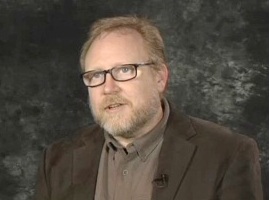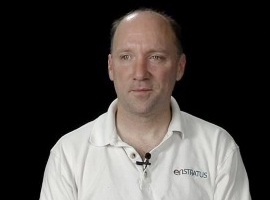InfoQ Homepage Architecture & Design Content on InfoQ
-
Ben Christensen on Resilience at Netflix with Hystrix, Reactive Programming for the JVM with RxJava
Ben Christensen explains how Netflix manages to stay online even with millions of users, the Hystrix fault tolerance library, how Netflix discovered reactive programming and why it ported Rx to Java.
-
Simon Peyton Jones on Teaching Computer Science to Kids with the Computing At School Initiative
Simon Peyton Jones explains the Computing At School initiative which aims to introduce Computer Science as a discipline in schools, how to explain the ideas behind algorithms to kids and much more.
-
Jim Hirschauer on Application Monitoring, AppDynamics 3.7
Jim Hirschauer describes the application monitoring tool landscape, KPIs and metrics to consider when monitoring, and compares monitoring traditional vs. cloud-based applications. He talks about performance considerations when instrumenting code, how organizations can be 'Smarter' about their Big Data, and looks at what's new in AppDynamics 3.7.
-
Interview with Barbara Liskov
Barbara Liskov keynoted at QCon London 2013 on the power of abstraction. Afterwards, InfoQ caught up with up with her to ask her about language design, modularity and distributed computation.
-
Incorporating Software Architecture in to the Agile Process
Through teamwork, an agile team can ensure the quality of its project's architecture, code hygiene, and other non-functional requirements by explicitly creating tasks for those concepts in each sprint. Alexander von Zitzewitz explains the importance of this method of agile development and how the use static analysis of code bases can help the "hard sell" of intentional architecture to management.
-
Big Data's Role in Etsy's Product Development
Etsy's approach to big data has been to give the entire organization visibility to different sources of data generated by their product as well as access to the experts who know how to use it. Nell Thomas explains her role at Etsy and how Etsy's view of big data has shaped its product's evolution.
-
Lean UX Explained
Learning from past projects, Jeff Gothelf helped synthesize Lean UX into a growing practice within software firms of all sizes, where teams focus on project outcomes and not output. When teams of varying competencies are brought together from the beginning of a project and given ownership, they are able to take responsibility for delivering a great client experience.
-
Brian McCallion on Enterprise Considerations for Cloud, Hybrid Strategies, and Amazon RedShift
Enterprise cloud specialist Brian McCallion talks about what's really holding back enterprises from adopting the cloud, how they should address their legacy applications, ways to avoid introducing complexity in distributed environments, the value of Amazon Redshift, and how technologists should broaden their knowledge and avoid specialization.

-
The Culture of Comaking with Jeff Patton
Jeff Patton helps teams build better products by helping them understand their users in a more thoughtful manner. By using the principles of comaking, teams begin to take more responsibility for their projects and their outcomes, thereby creating a more streamlined process of meeting their users' needs and having fun while doing it.

-
George Reese on Enterprise Cloud Strategy, Trends, and API Design
Cloud leader George Reese answers questions across a wide range of topics. He shares his thoughts on pitfalls of enterprise cloud strategies, overrated technologies, whether IaaS standards matter yet, the relevance of private clouds, and the need for common sense when designing a API.

-
Sadek Drobi, the Play 2.0 Story and what's new in 2.1
Sadek talks about the origins of Playframework, motivations behind 2.0 rewrite and Scala integration. He explains how important is it to have appropriate architecture and programming model while dealing with Realtime. He then reveals some features of the newly released 2.1 version.

-
George Dinwiddie on the Three Amigos (Business, Programmers, and Testers)
George Dinwiddie sits down with InfoQ at Agile 2012 to discuss the Three Amigos (Business, Programmers, and Testers) and how they need to interact and use examples in order to get a shared vision.